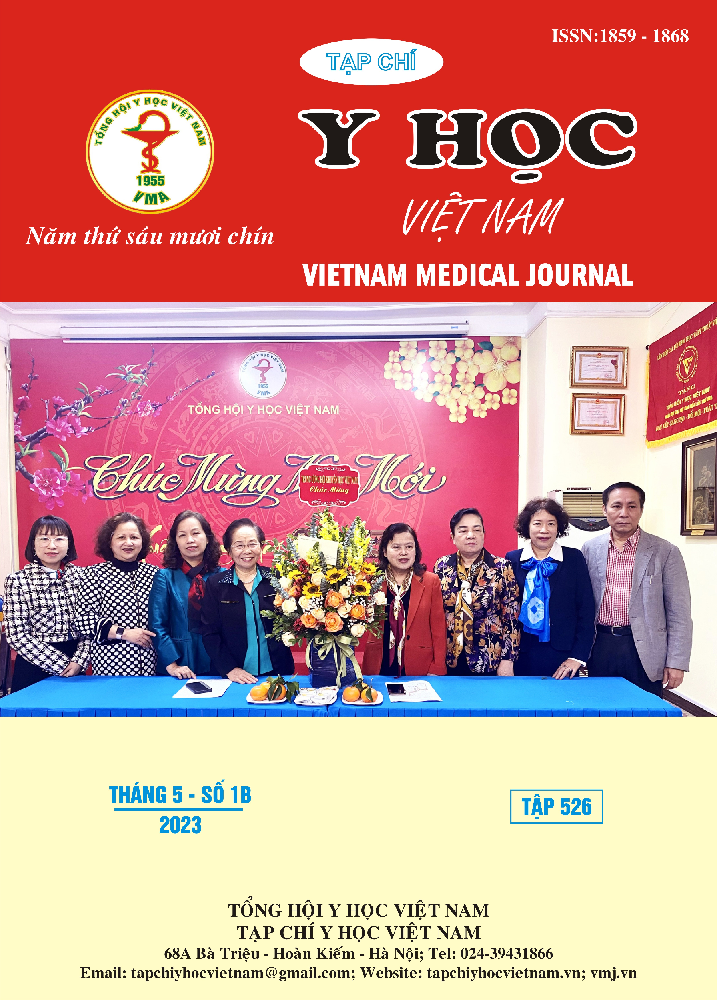RESULTS OF TECHNICAL HIGH-FLOW OXYGEN, WARM AND HUMIDIFY IN TRACHEOSTOMY PATIENTS
Main Article Content
Abstract
Objective: Comment on the change of clinical and subclinical indicators in tracheostomy patients before and after high-flow oxygen, warm and humidify (HFTO). Methods: 23 patients with tracheostomy were assigned HFTO through a heated and humidified device with airflow 50 l/min. Assess clinical and blood gas at some point in time. Results: After 23 patients received HFTO, we recognize that after 12 - 24h, almost all patients improved their ability to cough. After 24h, the patient’s sputum was diluted. SpO2 from the beginning increased and was stable in the first 24 hours. In 24 hours, the patient’s heart rate was steady. The respiratory rate decreased in 24h during HFTO. The blood gas of patients with HFTO was not statistically different compared with invasive ventilation. The success rate was 86,96% and the failure rate was 13,04%. Conclusion: Treatment with heated and humidified HFTO is effective in clearing the airway by diluting the sputum and stimulating coughing. The blood gas was stable after 24 hours from the beginning of the treatment.
Article Details
Keywords
High-flow Tracheal Oxygenation, tracheostomy, respiratory distress
References
2. Diehl JL, El Atrous S, Touchard D, Lemaire F, Brochard L. Changes in the work of breathing induced by tracheotomy in ventilator-dependent patients. American journal of respiratory and critical care medicine. 1999;159(2):383-388.
3. Astrachan DI, Kirchner JC, Goodwin WJ, Jr. Prolonged intubation vs. tracheotomy: complications, practical and psychological considerations. The Laryngoscope. 1988;98(11):1165-1169.
4. Lenglet H, Sztrymf B, Leroy C, Brun P, Dreyfuss D, Ricard JD. Humidified high flow nasal oxygen during respiratory failure in the emergency department: feasibility and efficacy. Respiratory care. 2012;57(11):1873-1878.
5. Sztrymf B, Messika J, Bertrand F, et al. Beneficial effects of humidified high flow nasal oxygen in critical care patients: a prospective pilot study. Intensive care medicine. 2011;37(11):1780-1786.
6. Mahafza T, Batarseh S, Bsoul N, Massad E, Qudaisat I, Al- Layla A. Early vs. late tracheostomy for the ICU patients: Experience in a referral hospital. Saudi Journal of Anaesthesia. 2012;6(2):152-154.
7. Evgeni Brotfain, Zlotnik A, Schwartz A, et al. Comparison of the effectiveness of high flow nasal oxygen cannula vs. standard non-rebreather oxygen face mask in post-extubation intensive care unit patients. The Israel Medical Association journal: IMAJ. 2014;16(11):718-722.
8. Afessa B, Hogans L, Murphy R, Kubilis P, Meyers B. APACHE II score is better than weaning indices in predicting prolonged mechanical ventilator dependence. Critical Care. 1997;1(1):P066.


